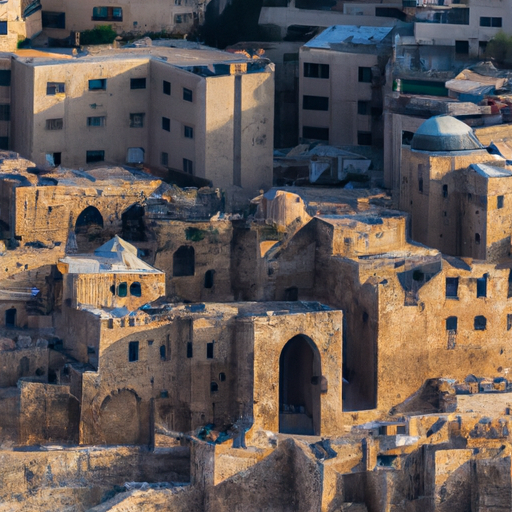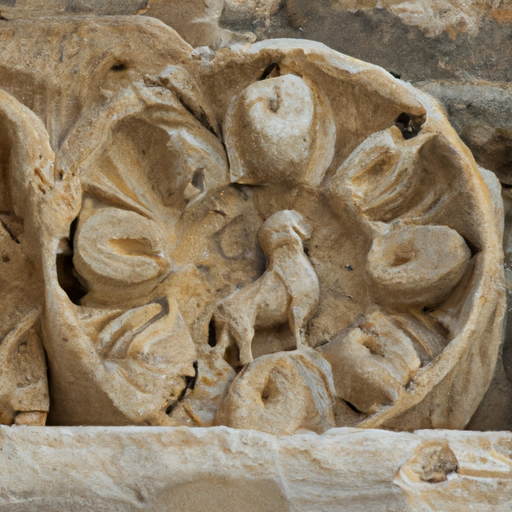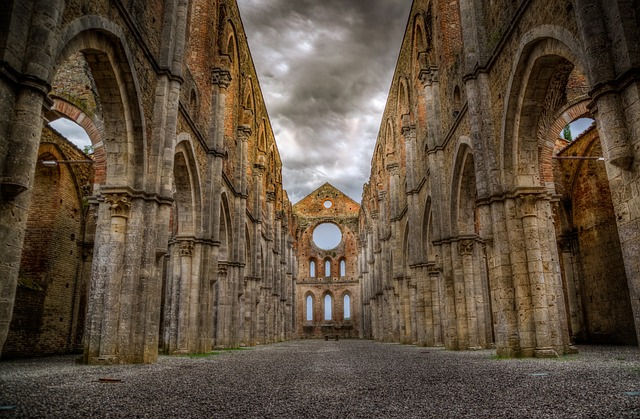Embark on a journey through time as we delve into the rich history and stunning archeology of Israel. From the ruins of ancient cities to sacred religious sites, this blog post explores the fascinating artifacts and structures that have stood the test of time, giving us invaluable insights into the lives and cultures of the civilizations that once thrived in this land.
Unveiling the Secrets of the Past: What Can These Ruins Tell Us?
Exploring ancient ruins in Israel is like opening a portal to the past. These remnants of civilizations long gone hold within them the stories, insights, and mysteries of bygone eras. By delving into the ruins, we can unravel the secrets of history and gain a deeper understanding of the people who once called these places home.
- 1. Architectural Marvels:
The ancient ruins of Israel are a testament to the architectural prowess of their time. From the grandeur of the Roman amphitheaters to the intricate mosaics of Byzantine churches, these structures showcase the skill and creativity of ancient civilizations. By studying the architectural features and techniques used, we can gain insights into the engineering practices, artistic styles, and cultural influences that shaped these societies. - 2. Cultural Significance:
Each ruin tells a unique story about the people who lived there. The layout of a city, the design of a temple, or the remains of a marketplace can reveal aspects of daily life, social hierarchies, and religious practices. By examining the artifacts and artifacts found within these ruins, archaeologists and historians can piece together the cultural fabric of these ancient societies, shedding light on their customs, beliefs, and traditions. - 3. Historical Context:
The ruins of Israel serve as a window into significant historical events and periods. From the remnants of ancient fortifications that bear witness to the conflicts and conquests of the past, to the ruins of ancient trade routes that illuminate the economic interactions between civilizations, each site offers a glimpse into the broader historical context of the region. By studying these ruins, historians can enrich our understanding of pivotal moments in history and their impact on the development of societies.

An aerial view showcasing the majestic ruins of Jerusalem's Old City
Jerusalem's Old City: A Timeless Witness of History?
Jerusalem's Old City stands as a timeless witness to centuries of history. This UNESCO World Heritage Site is a treasure trove of religious, cultural, and historical significance. Enclosed within its ancient walls are sacred sites revered by followers of Judaism, Christianity, and Islam. As you walk through its narrow streets and bustling markets, you can't help but feel the weight of the past and the profound impact this city has had on the world. The Old City is divided into four quarters – the Jewish Quarter, the Christian Quarter, the Muslim Quarter, and the Armenian Quarter – each with its own distinct charm and rich heritage.
The Western Wall, also known as the Wailing Wall, is a sacred site for Jewish worship and pilgrimage. It is said to be the last remaining remnant of the Second Temple, destroyed by the Romans in 70 CE. Believers from around the world come to the wall to offer prayers and leave handwritten notes in its crevices, a powerful testament to the enduring faith and connection to the past.
Walking along the Via Dolorosa, the path Jesus is believed to have taken on his way to crucifixion, is a deeply moving experience for Christians. It winds through the narrow streets of the Old City, passing by the Stations of the Cross and leading to the Church of the Holy Sepulchre, where Jesus is said to have been crucified, buried, and resurrected. The church is a significant pilgrimage site, drawing visitors from all over the world to witness and connect with the profound events of Christianity's central narrative.
The Dome of the Rock, located on the Temple Mount, is an iconic symbol of Jerusalem. This magnificent Islamic shrine is believed to be the site where the Prophet Muhammad ascended to heaven. Its golden dome and intricate mosaics make it a truly awe-inspiring sight. The Temple Mount itself holds great religious significance for both Jews and Muslims, making it a place of fervent devotion and spiritual contemplation.
As there is a lot to see , make sure you take a few days in a Jerusalem hotel or hostel to enjoy all the city has to offer.
"The world is a book, and those who do not travel read only one page." – Exploring the Ruins of Masada
"The world is a book, and those who do not travel read only one page." This famous quote by Saint Augustine perfectly encapsulates the essence of travel and exploration. And when it comes to unraveling the mysteries of ancient ruins, Masada is a chapter that simply cannot be missed. Perched atop a rugged plateau overlooking the Dead Sea, Masada is a testament to the indomitable spirit of the Jewish people and the resilience of the human spirit.
Steeped in history, Masada was the site of a dramatic siege and the last stand of Jewish rebels against the power of the Roman Empire in the 1st century CE. The ruins of this fortress complex, with its palaces, cisterns, and fortifications, offer a glimpse into the lives of the people who once inhabited this remote desert stronghold. As you explore the remains, you can almost hear the echoes of their struggles and triumphs, a poignant reminder of the human capacity for resistance and determination.
To reach the top of Masada, you can take a cable car or follow the ancient Snake Path, a challenging hike that rewards you with breathtaking views of the surrounding desert landscape. Standing on the summit, you can't help but marvel at the ingenuity of the ancient builders who constructed this fortress in such an inhospitable environment. The panoramic vistas of the Dead Sea and the rugged Judean Desert spread out before you, creating a sense of awe and wonder.

A detailed close-up of intricate carvings found in the ancient city of Caesarea
Caesarea and Megiddo: Echoing the Grandeur of Roman and Biblical Times?
Caesarea and Megiddo, two ancient cities in Israel, are living testaments to the grandeur and power of both the Roman Empire and the biblical era. With their impressive ruins and archaeological sites, these cities offer a fascinating glimpse into the past.
Caesarea, located along the Mediterranean coast, was a thriving center during the Roman period. Its magnificent harbor, built by Herod the Great, was an engineering marvel of the time. Exploring the ruins of Caesarea allows visitors to imagine the bustling port city it once was, with its amphitheater, hippodrome, and luxurious villas. Walking through the ancient streets, one can almost feel the echoes of the past, imagining the chariots racing in the stadium and the vibrant daily life of the inhabitants.
Megiddo, on the other hand, takes us back even further, to biblical times. Located in the Jezreel Valley, this ancient city played a significant role in various historical events. Known as Armageddon in the Book of Revelation, Megiddo has witnessed numerous battles and conquests throughout history. The remains of its fortified walls, palaces, and water systems showcase the advanced engineering skills of its builders. Exploring Megiddo allows us to connect with the biblical stories and events that unfolded within its walls.
Visiting Caesarea and Megiddo is like stepping into a time machine, transporting us to the grandeur and majesty of ancient civilizations. These archaeological sites provide invaluable insights into the past, shedding light on the cultural, political, and religious aspects of those times. As we walk among the ruins, we become immersed in history, marveling at the architectural achievements and imagining the lives of those who once inhabited these cities.
Through the exploration of Israel's ancient ruins, we are given a unique window into the past, allowing us to appreciate the rich tapestry of history that this region holds. These sites, though in ruins, stand as silent witnesses to the ebb and flow of civilizations, their triumphs, and their downfalls. As we stand amidst these ruins, we are reminded of the enduring power of human ingenuity and the indelible mark that past civilizations have left on the world.
For more info about tours in Israel please visit the site.
